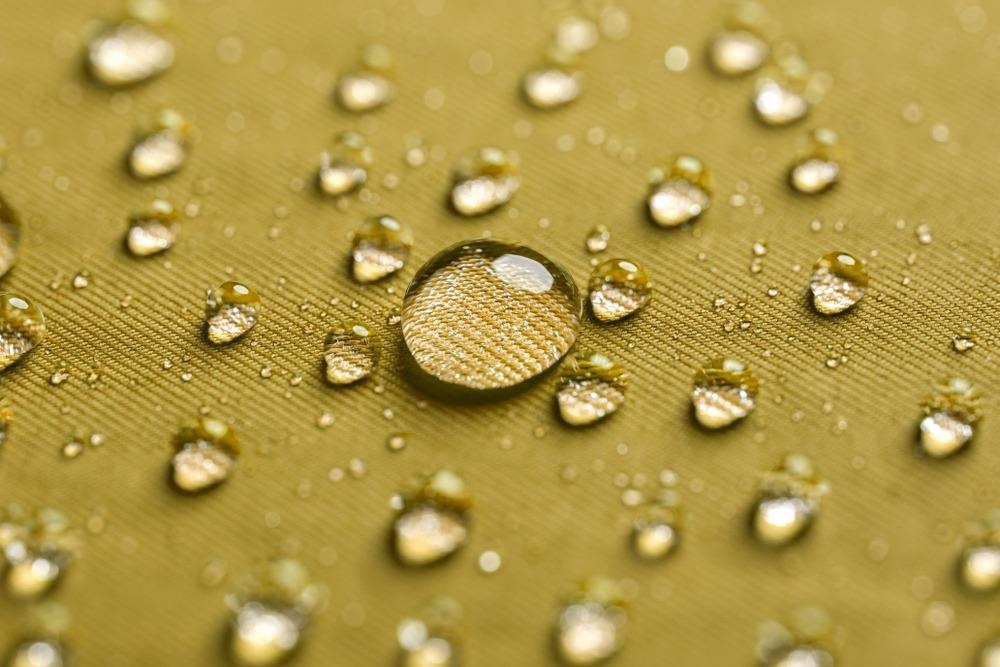Novel nanotechnology research for real-world applications such as the enhancement and stability of the material, cotton, during wash cycles, has been undertaken and published in the journal ACS Applied Nano Materials. This research comprised the development of water-repellent and anticorrosive superhydrophobic cotton fabrics with the use of silica nanoparticles.

Study: Silica Nanoparticles and Surface Silanization for the Fabrication of Water-Repellent Cotton Fibers. Image Credit: Sunrise_studio/Shutterstock.com
Silica Nanoparticles
Silica nanoparticles, which are derived from the most abundant compound on Earth in the form of oxidized silicon, have been a large part of biomedical research due to their low production cost, ease in preparation and scalability, as well as being easily modifiable.
These particles have had large traction in applications such as drug delivery, gene therapy, use in cosmetic products as a method of preventing aggregation of pigments, as well as tumor imaging. While biomedical applications may have been a significant research point for silica nanoparticles to target diseases and cancerous tissue for targeted drug delivery, they have also been used in other fields such as within food additives for their ability to enhance taste, color and increase shelf life.
The ability to modify the surfaces of nanoparticles enhances their desirability for use in various applications is integral for the field of nanotechnology as this can be utilized to increase targetability. Silica nanoparticles have shown promise within the literature for their ability to be used as coating agents for real-world applications such as fabric production.
A group of international researchers has investigated the use of silica nanoparticles (SiPs) to coat cotton fabrics to produce anti-wetting and anti-corrosive superhydrophobic-coated fibers with potential applications in manufacturing durable water-repellent and anti-stain clothing for medical employees.
Novel Research
The significance of this research within the context of textile applications lies within the ability to produce a cotton fabric with high hydrophobicity through the incorporation of silica nanoparticles.
Hydrophobicity within these fabrics ensures water is repelled from the fabric, encouraging the surface to be self-cleaning while also maintaining the integrity of the fabric, leading to fewer wash cycles being required by the fabric-wearer. This can prevent corrosion and micro-cracks of internal chemical bonds.
The researchers combined a monolayer of fluorescent core-shell silica nanoparticles as well as salinization, which consists of covering a surface with organofunctional alkoxysaline molecules; this allows bonds to form between mineral and organic components and can enhance the hydrophobicity of surfaces.
This innovative coating of cotton fabrics has allowed these fibers to be more stable with a higher level of durability when used within a high number of wash cycles. The research team utilized fluorine-free polymers that have a low concentration as well as solvents that are low in toxicity. The fluorescent probes incorporated within the silica nanoparticle development allowed comprehensive detection of the coating on the fibers to ensure the high quality of this experiment and verification of the silica nanoparticle coating.
Significance and Benefits
The significance of this research for the field of nanotechnology consists of aiding the development of a robust and multifunctional platform that can be tuned for a range of applications. This research ensures the coated fibers of the novel cotton fabric with low surface energy can be used for various clothing types such as for hospital staff, laboratory workers as well as within factories.
The benefit of this material includes its stain-resistant and durable properties, which is very advantageous for fields where uniforms are put through taxing and possibly messy tasks. The use of this stable material can be cost-efficient for companies that can exploit its high hydrophobicity and stain-resistant quality as it would translate to having decreased wash cycles and requiring fewer uniforms.
Additionally, incorporating nanomaterials within clothing in this manner has both health and environmental advantages as other hydrophobic agents, including fluorinated compounds, can be toxic and harmful when used to increase the hydrophobicity within clothing. The approach of using nanomaterials such as silica nanoparticles allows the challenge of increasing water-repellency of materials including cotton, which can produce a solution for longer-lasting properties.
Future Outlook
The tunability of silica nanoparticles also allows this research to be applicable for future solutions that can address other versatile applications that focus on properties such as antimicrobials, reduced sticking and even insect repellent agents. The incorporation of nanomaterials through silica nanoparticles for real-world applications can aid in solving global problems faced by both consumers and companies, with a requirement of clothing with high-performing properties with a cost-effective approach.
Reference
Maia, M., Noronha, V., Oliveira, N., Alves, A., Faria, A., Martinez, D., Ferreira, O. and Paula, A., (2022) Silica Nanoparticles and Surface Silanization for the Fabrication of Water-Repellent Cotton Fibers. ACS Applied Nano Materials,.Available at: https://pubs.acs.org/doi/10.1021/acsanm.1c03346
Further Reading
Hsu, S., Morris, R. and Cheng, F., (2021) Signaling Pathways Regulated by Silica Nanoparticles. Molecules, 26(5), p.1398. Available at: https://doi.org/10.3390/molecules26051398
Verlicchi, P., Zambello, E. and Al Aukidy, M., (2013) Removal of Pharmaceuticals by Conventional Wastewater Treatment Plants. Analysis, Removal, Effects and Risk of Pharmaceuticals in the Water Cycle - Occurrence and Transformation in the Environment, pp.231-286. Available at: https://doi.org/10.1016/B978-0-444-62657-8.00008-2
Downing, M. and Jain, P., (2020) Mesoporous silica nanoparticles: synthesis, properties, and biomedical applications. Nanoparticles for Biomedical Applications, pp.267-281. Available at: https://doi.org/10.1016/B978-0-12-816662-8.00016-3
Disclaimer: The views expressed here are those of the author expressed in their private capacity and do not necessarily represent the views of AZoM.com Limited T/A AZoNetwork the owner and operator of this website. This disclaimer forms part of the Terms and conditions of use of this website.